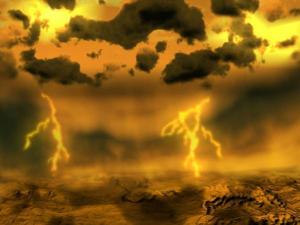
In some ways Venus could be consider to be the twin sister of our planet but in other ways it is pretty much opposite. High temperatures and crushing air pressure make it resemble a place christians would rather not visit (or name) than a planet. But now scientists have received images which confirm the fact that Venusian atmosphere generates its own lightning – which is pretty cool, and has some relevant indications as well.
“In addition to all the pressure and heat, we can confirm there is lightning on Venus — maybe even more activity than there is here on Earth,” said Christopher Russell, a NASA-sponsored scientist on Venus Express from the University of California, Los Angeles, and lead author of one of the Nature papers*. “Not a very good place to vacation, that is for sure.”.
We are aware of just three other planetary bodies in the entire universe that generate lightning — Earth, Jupiter and Saturn.
This discovery is very important because the electrical discharges drive the chemistry of an atmosphere by breaking molecules into fragments that can then join with other fragments in unexpected ways. This lightning is very different from others because it is not associated with water clouds. Instead, on Venus, the lightning is associated with clouds of sulfuric acid. For those of you who have no clue whatsoever about sulfuric acid well just say that a rain of sulfuric acid is not where you would want to be.
More than 250 scientists and engineers across Europe are involved in the Venus Express mission, supported by their institutes and national space agencies. The mission also sees the contribution of scientists from Russia and Japan, as well as from NASA, which sponsors 15 American Venus Express scientists and provides support to the radio science investigation via its Deep Space Network antennas.
*The discovery is part of the Venus Express science findings that appear in a special section of the Nov. 29 issue of the journal Nature. Other images could be found at http://www.esa.int/venus. It would be worth checking them out.









